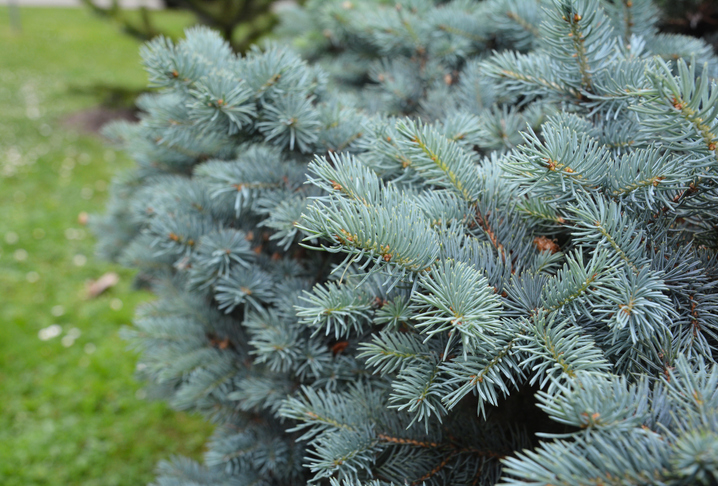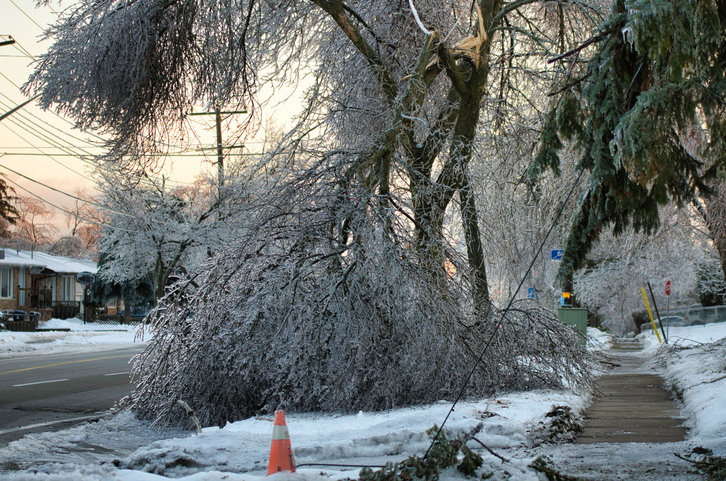The Colorado Blue Spruce can be found in home landscapes across the state, and its majestic blue-green hue makes it stand out among other, less showy trees. Known for its exceptional beauty, this common landscaping tree is worth learning about and caring for — especially since it’s Colorado’s official state tree. Let’s learn about the Colorado Blue Spruce and what it needs to grow healthy and strong.
What Does a Colorado Blue Spruce Look Like?
The Colorado Blue Spruce is a unique shade of silvery blue-green, and its color remains throughout the year. Its needles grow to about an inch in length, and they’re quite stiff and prickly. The tree also produces light brown cones that are between three and four inches in length, hanging downward near the top. Typically, the Colorado Blue Spruce grows in the shape of a pyramid, with a pointed top and wide, thick base.
Where Does it Grow?
The Colorado Blue Spruce is very hearty, and it can easily adapt to many different soil types and weather conditions. Additionally, the tree has an extensive root system that allows it to withstand high winds and harsh weather. The state of Colorado is in growing zones four through six, making it easy for the Blue Spruce to grow anywhere in the state, including in the mountains. In fact, the tree was first discovered in the Rocky Mountains over a century ago.
How Big Does it Get?
Growing at a slow to medium rate, the Colorado Blue Spruce reaches heights of 50 to 75 feet, with a spread of up to 20 feet in width. In the wild, this lovely tree can grow up to 135 feet tall, with a spread of 35 feet in width. If you have a young Colorado Blue Spruce in your home landscape, you can expect it to grow at a rate of up to 6-12″ per year.
What Does it Need to Grow?
The Colorado Blue Spruce is incredibly hearty, and it’s learned to adapt to all kinds of conditions. Let’s discuss its soil and sun needs.
What type of Soil Does it Need?
This hearty tree can thrive in all kinds of soil, including acidic, well-drained, clay, loamy, or moist conditions, and it can tolerate moderate flooding and droughts. Overall, it grows best in soil that receives normal moisture throughout the year.
How Much Light Does it Need?
The Colorado Blue Spruce thrives in full sun, with at least six hours of unfiltered sunlight. If you choose to plant one near your home, make sure it gets plenty of direct sunlight every day in order to grow properly.
Are Colorado Blue Spruce Trees Native to Colorado?
Not only is the Colorado Blue Spruce native to Colorado, but it was first discovered in the Rocky Mountains nearby. This tree is native to North America, and it can be found growing naturally in states like Colorado, New Mexico, Utah, Wyoming, Arizona, and Idaho.
Interesting Facts:
- Many animals find shelter in the Colorado Blue Spruce, including Pine siskins, crossbills, and nuthatches.
- The Colorado Blue Spruce was discovered in 1862 in the Rocky Mountains.
- The tips are edible, tart, and full of vitamin C.
- It’s the most popular choice as a landscape tree in the United States.
- They’re also the most popular tree to be chosen at Christmastime.
- The Blue Spruce is Colorado’s official state tree.
- These magnificent trees may live 600 to 800 years!
If you’d like to learn more about the Colorado Blue Spruce and how to properly care for them, we’re here to help. Contact us today at American Arbor Care.


